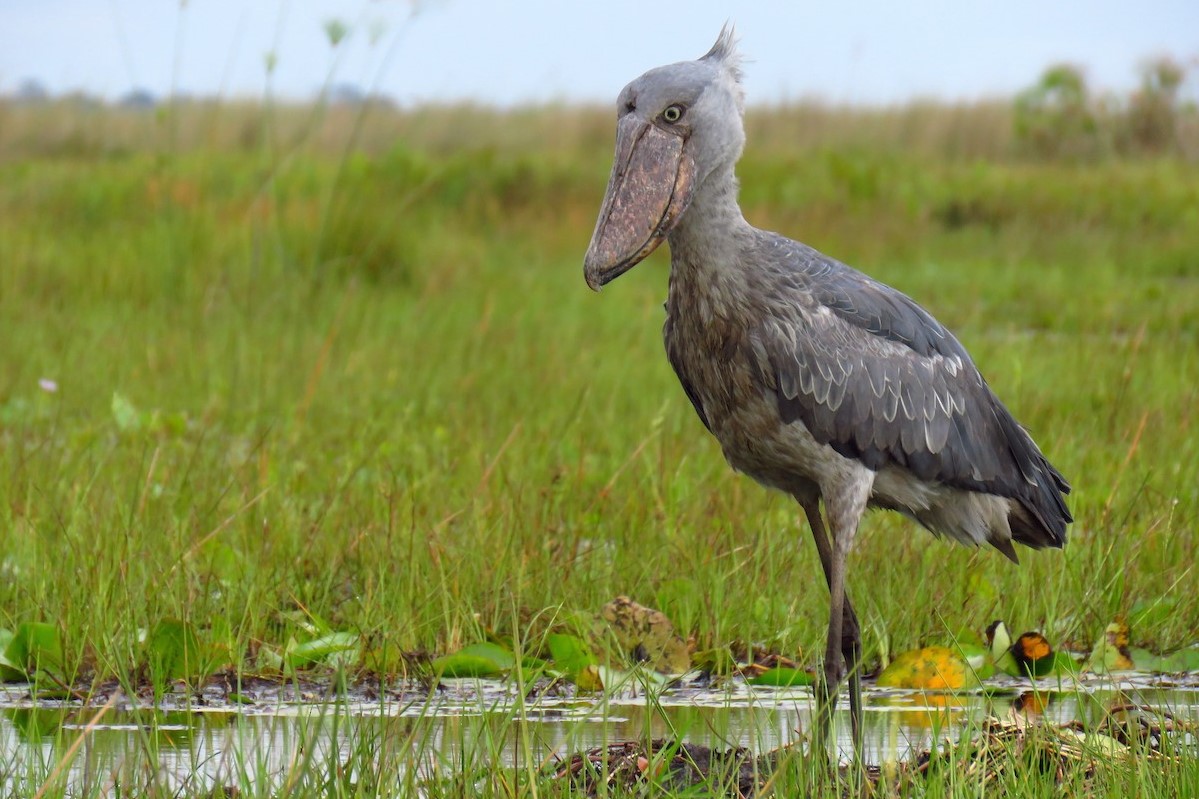The Majestic and Enigmatic Shoebill: Uganda’s Avian Wonder
The Shoebill of Uganda(Balaeniceps rex). Uganda, often referred to as the “Pearl of Africa,” is a country blessed with an incredible diversity of wildlife; Among its many fascinating inhabitants, the shoebill (Balaeniceps rex) stands out as one of the most majestic and enigmatic birds found in the swamps and wetlands of this East African nation.
Description – The Shoebill of Uganda(Balaeniceps rex).
The shoebill is a large bird characterized by its distinct appearance, most notably its massive shoe-shaped bill, from which it derives its name; With a height ranging from 110 to 140 centimeters and a wingspan of approximately 230 to 260 centimeters, the shoebill is an imposing figure in its wetland habitats. Its plumage is predominantly slate gray, and its eyes are a striking yellow, adding to its overall mystique.
Habitat – The Shoebill of Uganda(Balaeniceps rex).
The shoebill is primarily found in the vast wetlands and swamps of Uganda, particularly in areas like Murchison Falls National Park, Lugogo swamp in Ziwa Rhino sanctuary, and the Mabamba Swamp near Entebbe are some of the key locations where bird enthusiasts can catch a glimpse of the Shoebill in its natural habitat.
Behavior and Feeding Habits.
Despite its imposing appearance, the shoebill is known for its patient and stealthy hunting techniques. It is often observed standing motionless for extended periods near the water’s edge, waiting for its prey to approach. The bill, resembling an oversized Dutch clog, is a formidable tool for catching fish. With lightning-fast strikes, the shoebill snatches its prey with precision, showcasing its remarkable hunting prowess.
Conservation Status – The Shoebill of Uganda(Balaeniceps rex).
The shoebill, classified as “Vulnerable” on the International Union for Conservation of Nature (IUCN) Red List, faces various threats to its survival. Habitat loss due to agriculture, drainage of wetlands, and human disturbance are significant concerns. Additionally, the illegal pet trade and hunting pose additional challenges to the shoebill population. Conservation efforts in Uganda are actively addressing these issues, focusing on habitat protection, community engagement, and raising awareness about the importance of preserving this iconic species.
Conservation Initiatives – The Shoebill of Uganda(Balaeniceps rex).
Several organizations and government agencies in Uganda are dedicated to the conservation of the shoebill. Efforts include the establishment of protected areas, community-based conservation programs, and research initiatives to better understand the bird’s ecology and behavior; Educating local communities about the economic value of ecotourism associated with shoebill conservation is also crucial in fostering support for these efforts.
Ecotourism and Shoebill Watching:
For wildlife enthusiasts and birdwatchers, Uganda offers a unique opportunity to observe shoebills in their natural habitat. Guided tours in designated wetland areas provide a chance to witness these magnificent birds up close while contributing to their conservation; Responsible ecotourism plays a pivotal role in generating funds for conservation projects and promoting the sustainable coexistence of local communities and wildlife.
How can i see the Shoebill in Uganda?
Below are some of the Birding Safaris/tours offered by Arcadia Safaris that you can book to see the Shoebill in its natural habitant in Uganda.
3 Day Mabamba Shoebill and Botanical Gardens Safari
10 Day Birding Uganda and Game Drives
21 Days Birding Uganda and Gorilla Trekking Safari
18 Days Birding Tour with Gorilla Trekking
Remarks on the Shoebill of Uganda(Balaeniceps rex)
The shoebill, with its captivating appearance and fascinating behavior, is an integral part of Uganda’s rich biodiversity. As the country strives to balance development with conservation, ensuring the survival of iconic species like the shoebill becomes a shared responsibility; Through concerted efforts in habitat preservation, community engagement, and ecotourism, Uganda aims to secure a future where the shoebill continues to thrive in its wetland habitats, captivating the hearts of both locals and visitors alike.








